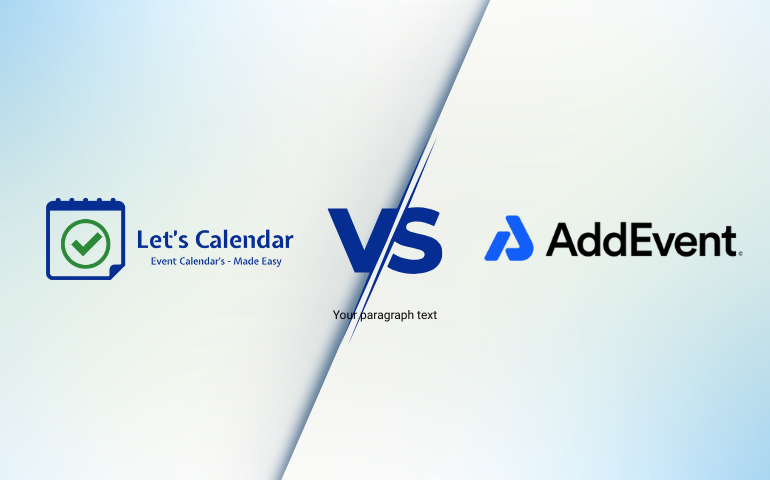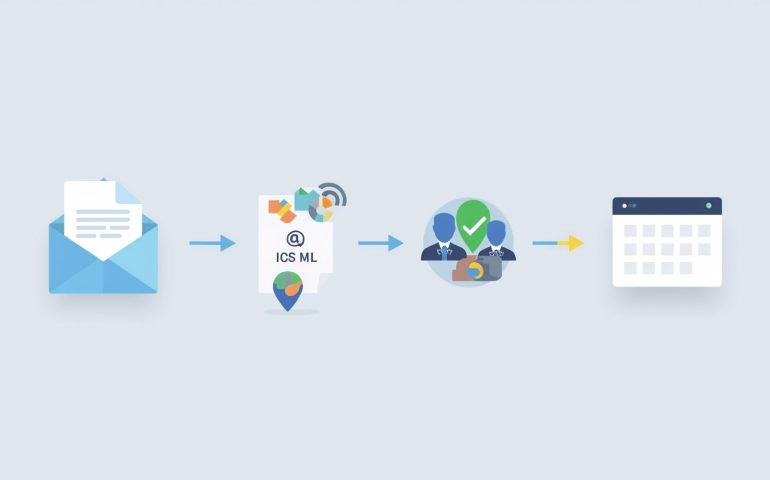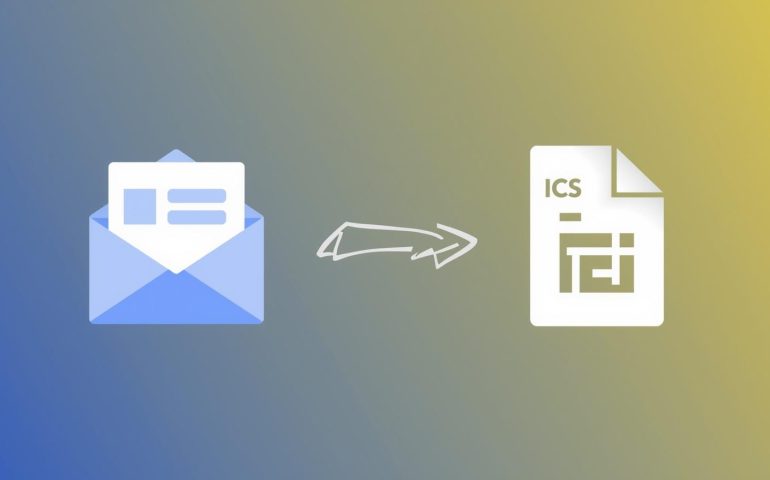- Email: [email protected]
- phone: +44 (0) 203 916 5117
20 Nov

Let’s Calendar vs AddEvent: Which Is Best ? [2025]
Let’s Calendar stands out as the stronger platform in 2025 for teams who need fast bulk calendar invites, automation, and reliable delivery. While AddEvent is good for basic “Add to Calendar” buttons, Let’s Calendar offers real-time sending, smarter workflows, and better scalability for events, webinars, and corporate communication. For teams who prioritize speed, accuracy, and
07 Nov

Plan Your Year-End Party in Minutes with Calendar Invites
Planning your year-end party doesn’t have to be stressful. In this blog, we explore how you can plan your party in minutes with calendar invites, saving time while ensuring everyone stays informed and excited. Learn practical tips on sending Outlook and Google calendar invites, managing RSVPs, and coordinating guests seamlessly. Whether it’s a corporate celebration
06 Nov

Smart Ways to Send Calendar Invites for Holiday Events
Holiday gatherings, parties, and corporate celebrations deserve perfect planning—and timing plays a major role. This blog explores smart ways to send calendar invites for holidays using digital tools that simplify coordination and maximize responses. From crafting personalized invites to syncing across Google, Outlook, and Apple Calendar, readers will learn how to make holiday scheduling seamless.
05 Nov

Bring Everyone Together This Christmas with Instant Calendar Invites
The holiday season is all about connection and technology can make it effortless. With Christmas with instant calendar invites, you can bring family, friends, and colleagues together in just a few clicks. Instead of juggling endless messages or RSVPs, tools like Let’s Calendar let you send personalized invites, set reminders, and ensure everyone’s plans align
29 Oct

From Inbox to Calendar: How ICS Files Make Event Invites Effortless
ICS files are the backbone of modern event scheduling, bridging the gap between inboxes and calendars. This blog explores how ICS files simplify event invites for webinars, meetings, and conferences while ensuring compatibility across Outlook, Gmail, and Apple Calendar. It also highlights how Let’s Calendar takes this a step further by allowing event organizers to
29 Oct

How to Send Outlook Calendar Invite That Gets Instant Responses
Sending Outlook calendar invites that get instant responses isn’t just about clicking “Send.” It’s about clarity, timing, and personalization. This blog explores proven strategies for crafting calendar invites that stand out and drive engagement, whether you’re managing a conference, webinar, or client meeting. You’ll also learn how tools like Let’s Calendar streamline the process helping
29 Oct

From Email to Event: How ICS Files Simplify Calendar Invitations
ICS files have revolutionized how event professionals schedule and manage invitations. By turning ordinary emails into structured calendar invites, ICS files streamline event workflows, eliminate scheduling confusion, and improve communication across platforms. Tools like Let’s Calendar take this efficiency further allowing organizers to send personalized and bulk calendar invitations with just a few clicks. Whether
17 Oct

Why Traditional “Add to Calendar” Buttons Fail and How Let’s Calendar Fixes It
Traditional “Add to Calendar” buttons are static, unreliable, and can reduce event attendance. They require multiple steps, don’t update automatically, and provide no attendee data. This blog explains how Let’s Calendar offers a modern solution with personalized, bulk, and auto-updating calendar invites. Organizers can send invites compatible with Gmail, Outlook, Apple, and other platforms, track
17 Oct

Struggling to Send Updated Calendar Invites for Your Zoom Webinar? Here’s How Let’s Calendar Solves It
Many webinar organizers rely on Zoom’s default calendar invites, which are generic and hard to update. This blog explains how Let’s Calendar allows organizers to send personalized, bulk, and auto-updating calendar invites. By integrating with Zoom, organizers can include their organization’s name, customize messages, and track attendee engagement. Invitations are compatible with Gmail, Outlook, Apple
17 Oct

Tired of Old Event Calendars? Try Let’s Calendar for a Fresh Experience
Traditional calendar tools often struggle to keep up with the demands of modern events, leaving organizers juggling manual invites, missing RSVPs, and inconsistent scheduling. This blog explores how event professionals can streamline their workflow with a fresh approach to calendar management. By leveraging Let’s Calendar, organizers can send bulk calendar invites, personalize event details for
![Let’s Calendar vs AddEvent: Which Is Best ? [2025]](http://letscalendar.com/wp-content/themes/saasland/assets/img/banners/banner_bg.png)






Recent Comments